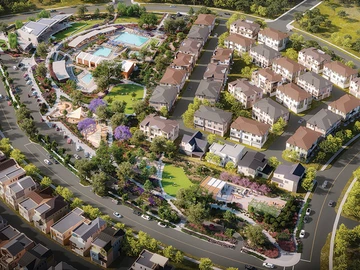The Rising Wave of Retirement Living in Today's Housing Market
As the global population ages and the number of retirees increases, the demand for retirement living options is reshaping the housing market landscape. Trends and opportunities are emerging quickly, and understanding these changes is vital for both residential real estate agents and investors. Here, we delve into the nuances of retirement living in the current housing market, tracing the impact of this demographic shift.
#The Shifting Demographics
The Baby Boomer generation—those born between 1946 and 1964—is retiring within this decade at a rate of about 10,000 people a day. This massive wave of retirees is directly influencing the housing market. They are choosing to downsize, move closer to family, or migrate to places with climates and communities more suitable for retirement living.
#Retirement Housing Preferences
Modern retirees have unique preferences. Many are veering away from traditional options like nursing homes or long-term care facilities. Instead, they are favoring "Aging in Place," a term implying seniors' desire to remain independent and live in their homes for as long as possible. This demand has prompted a remarkable surge in home remodeling endeavors aimed at making homes more age-friendly.
Active Adult Communities, another prevalent choice, provide shared amenities like clubhouses, pools, and golf courses. These lifestyle-focused, age-restricted neighborhoods are becoming progressively popular.
#Implications for the Housing Market
These changes are stimulating opportunities in the housing market. For real estate agents, the important task is recognizing what these trends mean for their local market. For example, markets that attract a large retiree population—such as Florida, Arizona, or South Carolina—may see a rise in the demand for homes in active adult communities or houses suited for aging in place.
On the other side, investors might identify lucrative openings in building or remodeling homes to cater to seniors' requirements. Developing luxury retirement communities or investing in property modifications for aging in place can generate substantial return-on-investment.
#Navigating the Transition
However, meeting the housing needs of this booming demographic isn't without challenges. These include increasing costs, accessibility issues, and maintaining the quality of life for aging residents. Planners, developers, and local governments must work together on solutions to provide affordable housing options.
#The Future of Retirement Living
Technology, too, will shape the retirement living landscape. Smart home technologies can play a significant role in facilitating independent living for seniors. From automated lighting systems to medical alert devices, technology will enhance safety, comfort, and accessibility in seniors' homes.
In conclusion, the rise in retirement living has significant implications for everyone in the housing market. Whether you are a real estate agent, investor, builder, or a retiree yourself, understanding these dynamics can guide your decisions as you navigate the ever-evolving housing landscape. For those ready to adapt to these trends, this sea of change can bring a tide of opportunity. With the right tools, information, and strategies, we can meet the challenge and build a future that respects the needs of retirees.

 Continue with Facebook
Continue with Facebook
 Continue with Email
Continue with Email














